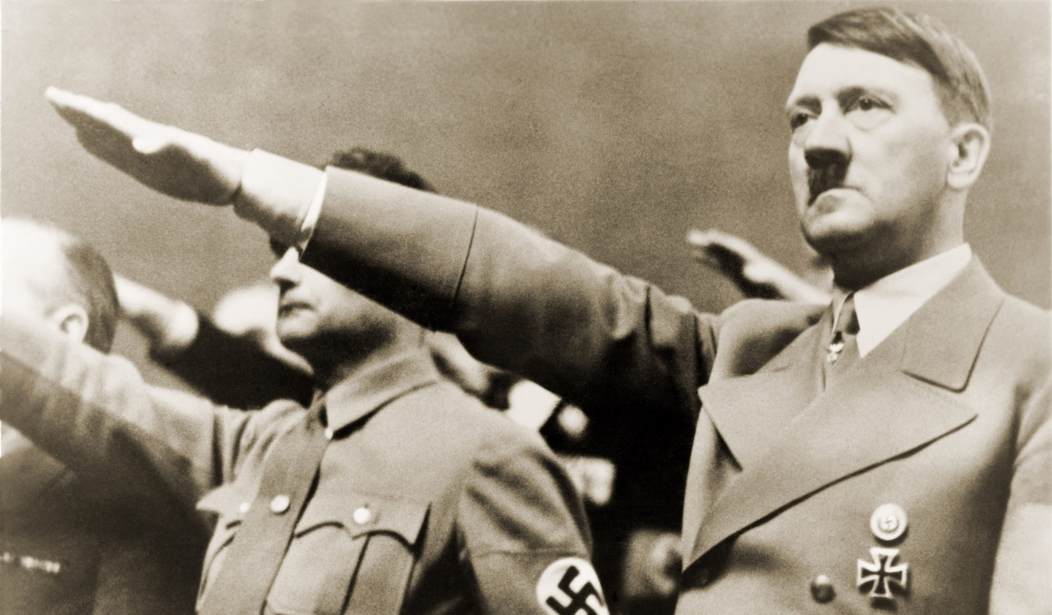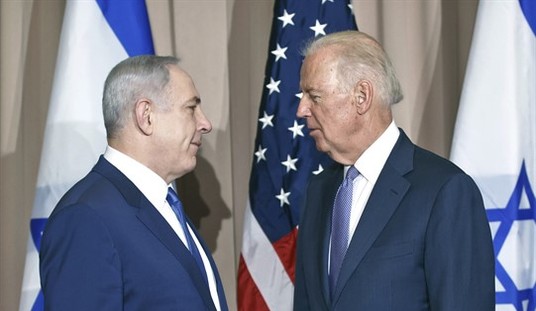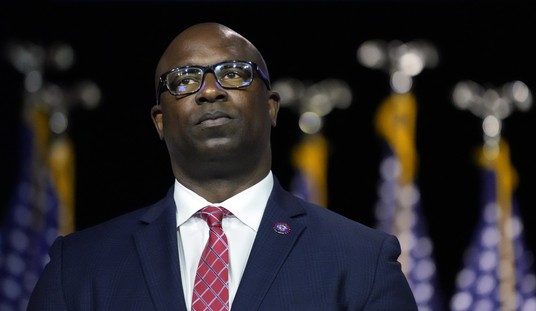Roman Catholics have gotten a bad reputation: they’re responsible for the Dark Ages, the Crusades, and the Inquisition. They’re anti-science, anti-Semites, and anti-freedom. Each of these accusations is an oversimplification that perverts history.
According to a new, groundbreaking book by sociologist and historian Rodney Stark, the truth is far more friendly to the Catholic Church, and those who say otherwise are overlooking important developments in the study of history. In Bearing False Witness: Debunking Centuries of Anti-Catholic History, Stark rebuts 10 historical myths that reflect badly on the Catholic church.
Little do many of us know, Catholics actually pioneered capitalism, laid the foundations for science, abolished slavery, and denounced witch hunts. That doesn’t sound so dark to me.
Stark is not a Catholic, and neither am I, but these truths are very important for everyone to know. Here is PJ Media’s list of the ten anti-Catholic myths Stark debunks.
10. No one expects the Spanish Inquisition…actually denounced witch hunts.
The Spanish Inquisition is synonymous with bigotry, torture, and book burning. Historians have estimated that between 10,000 and 300,000 were burned at the stake, and one claimed that it condemned 3 million.
These estimates are based on malicious lies. The myth began with “Montanus,” the pen name of a renegade Spanish monk who became a Lutheran and fled to the Netherlands. Protestants longed to hear of the horrors of Catholic prisons and tribunals, and Montanus gave them an “inside view.”
Luckily, the actual Inquisition kept meticulous records for hundreds of years. The beginning years were poorly documented, and historians agree those were the bloodiest — about 1,500 people were executed (by the Spanish authorities — the Inquisition never executed anyone). During the fully recorded period (1480 to 1700), there are 44,674 cases, and only 826 people were executed. This is a travesty, but nothing close to the horrific myths we know and love. This is about ten deaths per year, while English courts averaged 750 hangings a year between 1530 and 1630.
Also compared to other courts in Europe at the time, the Inquisition was more restrained when it came to torture. “Church law limited torture to one session lasting no more than fifteen minutes, and there could be no danger to life or limb,” Stark notes. While this still allows a wide range of pain and suffering, torture was only used in about 2 percent of all recorded cases.
Finally, and perhaps most importantly, the Inquisition actually clamped down on witch hunting. In the late Middle Ages and especially in the “Enlightenment,” fear of witches led the masses to seize and kill many across Europe. Ironically, the Catholic Church allowed magic (medical science was only in its infancy, and magic seemed to work just as well), and most of those suspected of being witches were trying to use magic sanctioned by the Church.
The Inquisition actually listened to these people, and unlike other courts at the time, they made a distinction between “the implicit and explicit invocation of demons.” In Barcelona in 1549, a local branch of the Inquisition ordered 7 suspected witches be burned, but the overarching authority, the Suprema, sent an investigator who ended up pardoning the women and executing those who conducted the witch hunting!
The Inquisition didn’t support witch hunting, instead “it was their influence, and especially their discrediting of evidence gained by torture, that brought witch-burning to an end in Catholic areas–an effect that soon seeped into the Protestant areas as well.”
Next Page: Hitler’s Pope and the myth of anti-Semitism
9. How the Pope thwarted Hitler and the Catholic Church helped the Jews.
Is Roman Catholicism the author of anti-Semitism? Emphatically no. The ancients invented it — the Egyptians and (better documented) the Romans. The esteemed Roman historian Tacitus (56 – 117 A.D.) wrote “the Jews had ‘entrenched themselves by their very wickedness’ and they sought ‘increasing wealth’ through ‘their stubborn loyalty’ to one another.” Marcus Tullius Cicero (106 – 43 B.C.) said Jewish rites were “at variance with the glory of our empire, [and] the dignity of our name.”
While Jewish attacks were the biggest threat to the early Church, Christians valued Jews in their communities because of the “theological doctrine that the Second Coming would be ushered in by the conversion of the Jews.” Stark notes that “no pope in the Middle Ages ever undertook a campaign to convert the Jews,” and that monks and bishops like Bernard of Clairvaux sheltered Jews when renegade knights tried to kill them.
Similarly, Pope Pius XII, who has been attacked as “Hitler’s Pope,” actually hid Jews from the Nazis during World War II. Chaim Weizmann, who would become the first president of Israel, praised Pius XII, saying, “The Holy See is lending its powerful help wherever it can, to mitigate the fate of my persecuted co-religionists.” The Israeli diplomat Pinchas Lapide estimated that Pius XII was instrumental in saving “at least 700,000, but probably as many as 860,000 Jews from certain death at Nazi hands.”
Nevertheless, leftists pushed the myth that Pope Pius XII actually served the Führer. A left-wing German playwright started it in the 1960s, and in 1999 and 2001, books came out in America to push the focus on Catholic anti-Semitism.
Despite these vile lies, “The Roman Catholic Church has a long and honorable record of stout opposition to attacks upon Jews,” Stark wrote. “And Pope Pius XII fully lived up to that tradition.”
Next Page: The Crusades were justifiable, late, self-funded, and defensive.
8. The Crusades were justifiable, late, self-funded, and defensive.
In 1999, hundreds of Protestants took a “Reconciliation Walk” to apologize for the Crusades. At the National Prayer Breakfast last year, Obama declared that we should “remember that during the Crusades and the Inquisition, people committed terrible deeds in the name of Christ.”
Recently, a new idea is in vogue — that the Crusades were the first example of European colonialism, the oppressive and exploitative rule over other nations that allegedly held back progress in Asia, Africa, and the Americas. This also is a myth, but the Crusades had nothing to do with it.
The First Crusade was launched in 1095, centuries after Muslims defeated Christians in Syria, Egypt, North Africa, Sicily, Spain, and even southern France. In 1009, an Islamic leader destroyed the Church of the Holy Sepulcher in Jerusalem, causing huge outrage and almost launching the crusade, but that leader was deposed shortly afterward. Nevertheless, reports reached Europe that Christian pilgrims to the Holy Land were being tortured, killed, and sold into slavery.
In this context, Pope Urban VIII’s declaration for a crusade seems like a late and rather acceptable response to centuries of Muslim expansion. Furthermore, the knights and lords who went on the crusade mortgaged their lands and sold their earthly goods to meet the enormous costs of crusading. Contrary to the colonialism narrative, the crusader kingdoms did not make money — they drained it! Indeed, these states “remained dependent on Christendom for men and money, endured as long as Christendom retained enough interest to keep supplying them, and withered and collapsed when that interest was lost.”
Finally, the Crusades are attacked as barbaric and evil, while Muslim leaders like Saladin are hailed as paragons of chivalry. Not so! While the crusaders killed and looted Jerusalem in 1099, that was in accordance with the rules of war at the time. If a city refused to surrender, it cost the conquering army heavy losses, and it was considered just to pillage it afterward. This is horrible, but not unique.
In fact, the greatest massacre of the entire period came in 1266, when the sultan Baibars killed and enslaved all inhabitants of Antioch, even after it surrendered! And Saladin, hailed as a true knight, only allowed the inhabitants of Jerusalem to live because they did surrender without resistance. After the Battle of Hattin, however, he personally butchered the defeated knights and gave free rein to “devout men and ascetics” who lustily slaughtered the defeated.
Next Page: Did Catholicism suppress alternate Christianities?
7. The “Secret” Gospels weren’t even Christian.
In recent years, “lost gospels” have caused a real scandal. The Gospel of Mary, the Gospel of Thomas, and the Gospel of Judas are just three of the more well-known pseudo gospels which some authors today hail as proof that what we now know as orthodox Christianity and Roman Catholicism was really just one interpretation of the faith, and a less attractive one at that.
On the contrary, these “gospels” are younger and less reliable than Matthew, Mark, Luke, and John — and they are not even truly Christian. They have a few major themes:
- The world is corrupt because it was created by an inferior and evil, renegade god-ling.
- This evil “God” is worshipped by the Jews, who are an accursed people, and orthodox Christians have bought the same lies.
- Jesus is not this evil god’s son, but is a teacher (or spiritual being) who taught a way to free an enlightened few from the evils of the material world.
- Extreme asceticism, including celibacy, is the only way to free yourself from evil.
These themes are more Neoplatonist than Christian. From the book of Genesis onward, creation is considered good and wonderful. In 1 Corinthians 7, Saint Paul declared that “it is better to marry than to burn,” and encouraged married couples to exercise their “conjugal rights” regularly.
Most importantly, these gospels are forgeries. Unlike books of the Old or New Testaments, they lack historical context and exist in an otherworldly setting. Most biblical books, by contrast, abound in correct historical and geographic details, while these “gospels” focus on mystical revelations from another reality.
Next Page: The myth of pagan persecution.
6. The Roman Catholic Church did not persecute pagans — it assimilated them.
After the conversion of Constantine made Christianity the official religion of the Roman Empire, paganism seemed to disappear. The early church historian Eusebius (275 – 339 A.D.) claimed that Christians destroyed all earlier pagan temples. This too, however, was overblown.
Many pagan temples were rededicated to Christianity, and pagans throughout the Roman Empire adopted Jesus as one of the gods in their pantheon. Even under Christian emperors, many pagans were appointed to the highest positions in Roman government: consuls and prefects.
Later historians like Edward Gibbon, and more modern writers like Gore Vidal celebrated the pagan Emperor Julian (361 – 363). Widely known as Julian the Apostate, this emperor restored paganism as the state-supported faith, and condoned the torture of several bishops and overlooked many “summary executions that seem to have taken place in large numbers in southern Syria.” His reign proved very short, but it sparked fear of renewed persecution among Christians and ended up polarizing the two groups against one another.
Nevertheless, even Christian emperors after Julian did not persecute pagans. In fact, in 400 A.D., Emperor Arcadius rejected a proposal to destroy the temples in Gaza, because the pagans proved loyal in paying their taxes.
Paganism still survives today among rural and small-town Europeans, who preserve the mentality of spirits in nature. Furthermore, Christians adopted large pagan festivals — most famously the Saturnalia became the season of Christmas to celebrate Jesus’ birth. The Roman Catholic Church didn’t extinguish paganism, it assimilated most of it.
Next Page: The discredited myth of the “Dark Ages.”
5. Technology blossomed, slavery was abolished, and art flowered in the “Dark Ages.”
Children often learn that, after the fall of Rome, Europe descended into a “Dark Age.” The medieval period was not just barbaric, it was regressive — people forgot the meaning of civilization and rejected all learning. This is an “Enlightenment” fantasy, thoroughly debunked by Stark.
Windmills are a rather inefficient method of energy production today, but in the Middle Ages, people in what are now Belgium and the Netherlands used them to pump out the sea. Water mills fueled a huge production increase in England and France, and innovations in agriculture created a huge surplus which allowed Europe to feed a growing population.
Chimneys and eyeglasses were developed during this “dark” period, as were stirrups and horseshoes, which allowed mounted soldiers to become knights. Also during the Middle Ages, Europeans invented true sailing ships and armed them with cannons.
But even more importantly, medieval Christians were the first people in history to abolish slavery as an institution. The clergy began arguing that no one should be enslaved, and then Clovis II, king of the Franks, married his British slave Bathilda in 649. Bathilda used her position to mount a campaign to stop the slave trade and redeem those in slavery.
The great emperor Charlemagne also opposed slavery, and in the 1000s, Saint Wulfstan and Saint Anselm campaigned to remove the last vestiges of slavery. Yes, serfdom persisted, but serfs had important rights and were never viewed as chattels.
Finally, the Middle Ages also saw huge advances in high culture. Medieval musicians invented polyphony — the playing of multiple musical lines at once, thus producing harmonies. By the tenth century, they had crafted a way to write and read music. Medieval artists first used oil paint, and the architectural inventions of the age made the great cathedrals of Europe possible. It was during this period that authors began writing in the people’s languages, and French, English, and Spanish grew from giants such as Dante, Chaucer, and Cervantes.
Next Page: How the Catholic Church fostered learning and science.
4. Theology, the university, and the birth of science.
Many religions consider the universe mysterious. The Chinese taught that the universe was subtle and complex, not to be subjected to human reason. The ancient Greeks thought the universe eternal, the gods incapable of creating it, and all of nature imbued with desires and “affections.” Early Islam taught that natural laws are a blasphemy to Allah, as they deny his freedom to act.
Conversely, Christian theology focused on reason, and was willing to reinterpret and reject former teachings if they ceased to make sense. As Clement of Alexandria wrote during the third century, “He who has received these things fortified by reason, can never lose them; whereas he who receives them without proofs, by an assent to a simple statement of them, can neither keep them safely, nor is certain if they are true; because he who easily believes, also easily yields.”
Medieval universities grew out of this spirit of testing and discovery. Medieval scholars focused on empiricism — testing theories with tangible experiments. In fact, they pioneered the practice of human dissection, which made a real understanding of anatomy finally possible. The first well-documented human dissections trace to the late 1200s.
Finally, many historians focus on the “scientific revolution” pioneered by Nicolaus Copernicus (1473 – 1543), the man who first posited the theory that the world revolves around the sun. Copernicus made a wonderful discovery, but he did not reach that conclusion on his own. Stark traces the experiments and ideas that led to this discovery from Robert Grosseteste (1168 – 1253) to Roger Bacon (1214 – 1294) to William of Ockham (1295 – 1349).
Even after Copernicus developed his heliocentric theory, his calculations did not work better than the earlier ones — until Johannes Kepler (1571 – 1630) discovered that planets moved in ellipses, not circles. Ironically, when Galileo Galilei (1564 – 1642) got in trouble, he was mistaken about the science he insisted on! Contrary to popular belief, he was neither imprisoned nor tortured, and was placed under house arrest for violating his own pledge not to teach heliocentrism.
Finally, Stark did an analysis of all major scientific thinkers from 1543 to 1680, and discovered that half of them were Roman Catholics, 60 percent were devout, and 38 percent at least declared they were Christian (and there is no evidence to consider them skeptical or atheist). Only one prominent scientist at the time, Edmund Halley (1656 – 1742), could be considered a skeptic, and only because he was rejected for an Oxford professorship for his “atheism.”
Next Page: The Catholic Church helped Africans and Native Americans, against European colonial powers.
3. The Roman Catholic Church fought slavery in the New World, influenced mild slave codes, and even developed a Native American civilization.
The great Catholic authority Saint Thomas Aquinas (1225 – 1274) opposed slavery, as did nearly every Roman Catholic pope. When the Spanish occupied the Canary Islands, Pope Eugene IV (1431 – 1447) threatened to excommunicate everyone involved unless they released the Canary islanders from bondage.
While some European conquerors argued that Native Americans and Africans were not fully human, the popes consistently opposed New World slavery. Unfortunately, popes had little influence over Spanish and Portuguese colonialism, and these detestable practices continued.
Modern scholars denounce the argument that French and Spanish slave codes were more humane than English ones on the grounds that slavery is always the same. This is emphatically not the case.
The French slave code not only treated slaves as fully human, but exempted them from work on Sundays and holy days, forbade torture, and guaranteed the right of holy matrimony. The Spanish code was even better: it enabled slaves to petition the courts to have themselves appraised and to purchase themselves from their masters. It also allowed them to make money by working for themselves eighty-seven days a year.
The results of these codes speak for themselves. In 1817, there were 114,058 free blacks in Cuba alone. In New Orleans, which followed the French slave code, 41.7 percent of blacks were free in 1830, while other comparable southern cities had much lower numbers: 6.4 percent in Charleston, SC; 5.2 percent in Columbia, SC; and 4.3 percent in Savannah, GA, for example.
Finally, the Jesuit Republic of Paraguay will forever stand as a testament to the ability of Roman Catholics to help indigenous populations against colonial powers. In 1609, a group of Spanish Jesuits “founded, protected, educated, and advised a remarkable civilization…of Guarani Indians.” They pursued arts and industry, cities had paved streets and impressive buildings, and they made a valid attempt at representative government.
The Jesuits did this in order to promote peace between the Spaniards and the Guarani, but the European powers struck back. In 1754, the Jesuit republic defeated a Spanish force from the west and a Portuguese force from the east, which attacked simultaneously. The Spanish government retaliated by arresting all Jesuits in Spain and deporting them to the Papal States. In 1768, they finally defeated the Guarani and ended the civilization. Nevertheless, this was an impressive achievement, and a testament to the values of the Roman Catholic Church.
Next Page: Roman Catholics fostered, rather than opposing, democratic government.
2. Debunking the myth of Catholic authoritarianism.
Many people assume that the Roman Catholic Church fostered dictatorship and opposed democratic government. Some even attribute the idea of the “divine right of kings” to this tendency among Catholics. Nonsense — Catholics have a complex history with the state and usually oppose unlimited power. Furthermore, the “divine right of kings” originated with Protestants!
From the beginning, Christianity has fostered a healthy skepticism for state power. Jesus commanded his disciples to “give unto Caesar that which is Caesar’s and give unto God that which is God’s.” This has been interpreted in many ways, but Saint Augustine’s interpretation has generally prevailed. That is, Christians should support the government for purposes of peace and earthly life, but avoid giving it too much allegiance and moral authority.
The church emphasized the secular nature of kingship, allowing a more robust debate about the basis of worldly power. In fact, when the nobles forced Magna Carta on King John in 1215, limiting the power of the king in England, all the bishops and the master of the Knights Templar sided against the tyrannical ruler! So much for the “divine right of kings.”
Leftists attack the Catholic Church as reactionary because it opposed revolutionaries in France, Russia, and Spain. In each of these cases, however, the Catholic Church waited a long time to oppose the movements, and revolutionaries demanded too much, driving the church into opposition. In 1793 in revolutionary France, nearly a thousand priests were murdered.
New records from the Soviet regime showed that about two hundred thousand clergy, monks, and nuns — Russian Orthodox and Roman Catholic — had been executed by the regime, many of them in gruesome ways. The total number of Russians executed for their religion is now estimated to be in excess of twenty million. In revolutionary Spain, attacks on the Catholic Church began early, and scholars agree that a total of 6,832 bishops, priests, monks, nuns, and friars were killed by Republican radicals. Catholics had no choice but to support Hitler’s ally Franco.
Next Page: The “Protestant Ethic” birthed capitalism in the Catholic Middle Ages
1. The Catholic contribution to free markets and modernity.
Perhaps no myth has done so much damage to the Catholic Church than the idea that the “spirit of capitalism” was a Protestant invention. The system of uncoerced labor, free markets, and secure property rights which we today call capitalism developed in medieval monasteries.
Christians have long debated the benefits of commerce, with some claiming that biblical condemnations of “usury” forbids lending money at interest. This view changed as monasteries grew and became more specialized.
In the Middle Ages, the church was the largest landowner in Europe, and this made the church extremely wealthy. As the great technological achievements (crop rotation, water mills, and windmills, et cetera) increased productivity, the various monastic estates began to specialize and trade with one another. This trade encouraged a cash economy.
The wealth of monastic estates also led them to start lending money. Indeed, it was they who invented the mort-gage (dead pledge), where the borrower pledged land as security for a loan, and the lender collected all income from that land during the time of the loan, without deducting it from the amount of money owed.
Monks even hired laborers, as the monks themselves spent all their time saying masses for wealthy patrons and their relatives in purgatory. In this way, monastic estates acted like modern businesses and banks.


















Join the conversation as a VIP Member